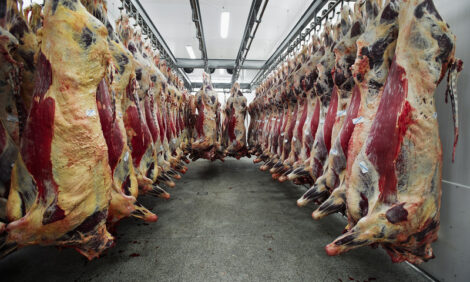



Top-flight BSE Surveillance Keeps Borders Open for Trade
ALBERTA - The Food Safety Division’s (FSD) animal surveillance system for detecting bovine spongiform encephalopathy (BSE) in Alberta cattle is helping to keep the borders open for trade with other countries, says Dr. Gerald Ollis, Alberta’s chief provincial veterinarian.“One of the ultimate goals for surveillance is to prove what we say, to put our money where our mouth is. We can say we don’t have a specific disease, but unless we do the amount of surveillance, at a statistically significant level, we can’t prove it,” says Ollis, of Alberta Agriculture and Food, Edmonton.
"One of the ultimate goals for surveillance is to prove what we say, to put our money where our mouth is."
Ollis, Alberta Agriculture and Food.
By combining FSD’s provincial program with the Canadian Food Inspection Agency’s (CFIA) federal surveillance program, Alberta is meeting the tough standards for BSE surveillance set out by the World Organization for Animal Health (OIE), a governing body that sets out guidelines that countries must meet to continue trading. OIE has 167 member countries.
“Alberta’s BSE surveillance focuses on detecting the presence of BSE and, if it’s here, what level it is at,” says Ollis.
“The Canada/Alberta BSE program is highly thought of by OIE scientists, and that is one reason why they will recommend that Canada get a ‘Controlled BSE Risk’ ranking at the agency’s meeting in May. The great number of tests done on Alberta cattle is also important to winning the ranking.”
Alberta spends $15 million a year on the joint venture to help reimburse farmers and veterinarians for the costs associated with participating in the voluntary program, above what the federal government provides. “It costs the farmer absolutely nothing to participate in the program,” says Ollis. “We’re getting very good participation.
“One of the reasons the OIE made some specific recommendations when it comes to surveillance of BSE is because countries can claim they don’t have any BSE, yet they’re not doing enough testing to back that up.”
The OIE is now ruling that if countries don’t do surveillance at a recommended level, other countries can use that as a justification for not allowing trade with that country.
“The FSD is using scientific principles in conducting our surveillance so that we can utilize the interpretive results in an internationally accepted manner,” says Ollis. “The targeted surveillance generates the disease data that’s required by international trading partners. It verifies our claim that we do not have a specific disease or do have a specific disease at a certain level.”
When farmers notice cattle showing possible symptoms of BSE, they are asked to call in a veterinarian to assess the animal, and if needed, take a sample from it to send to a FSD or CFIA lab in Alberta for analysis.


